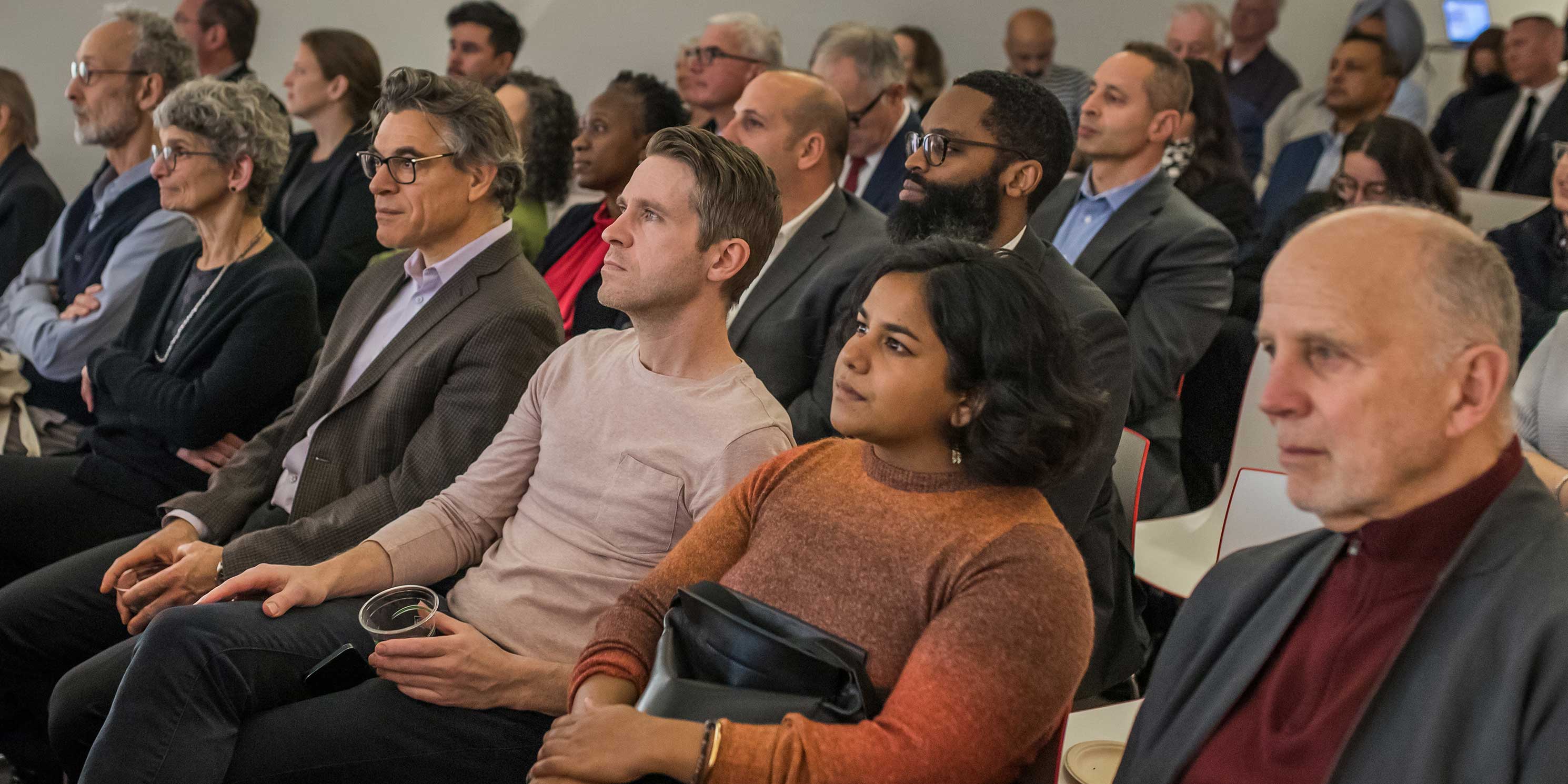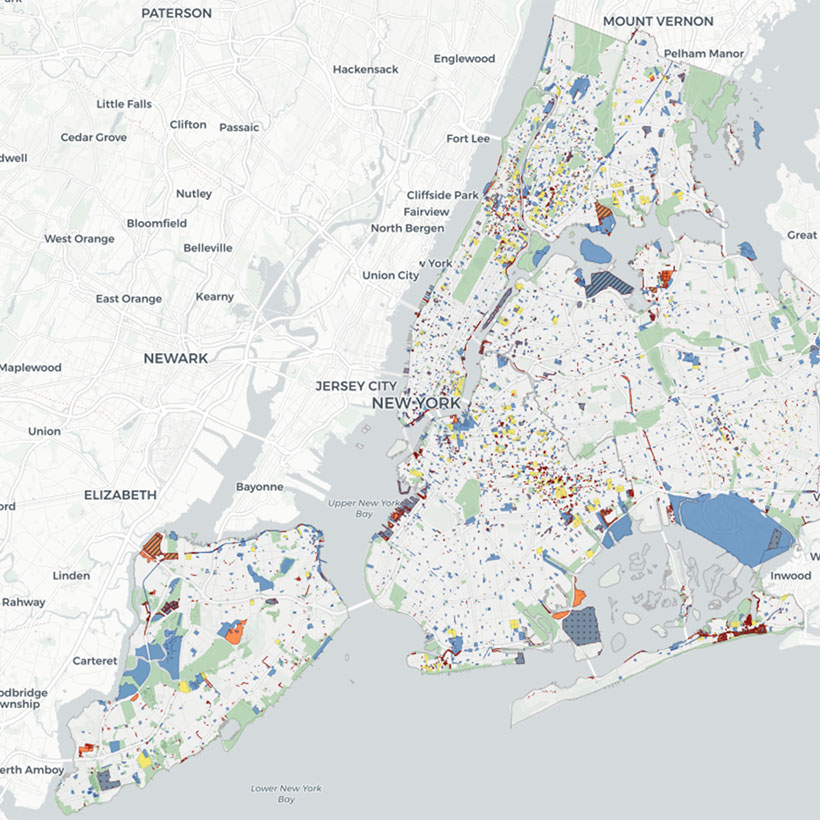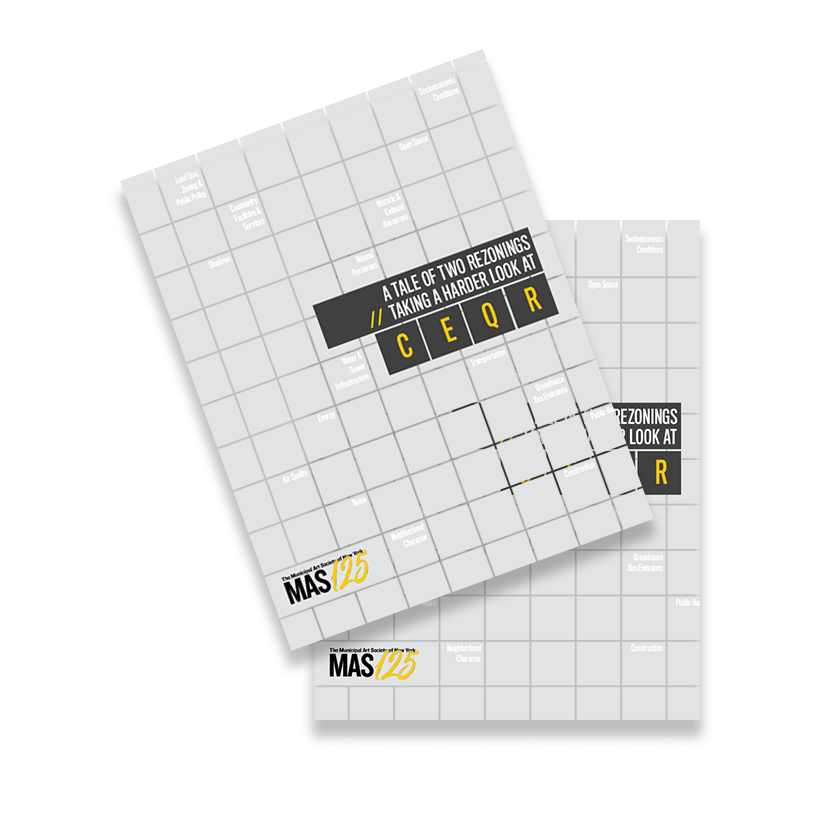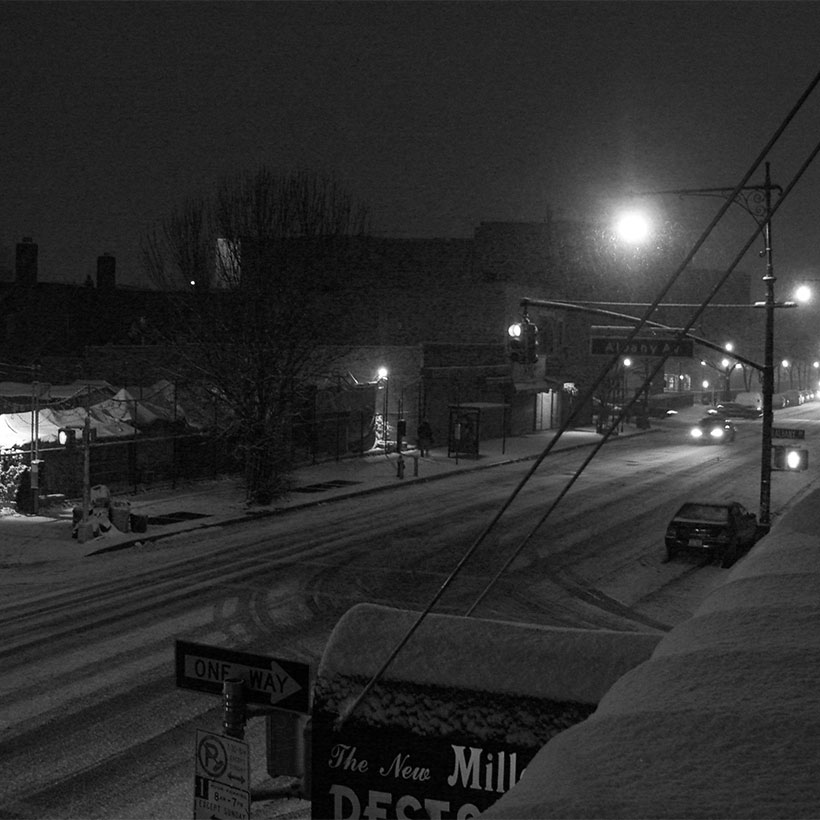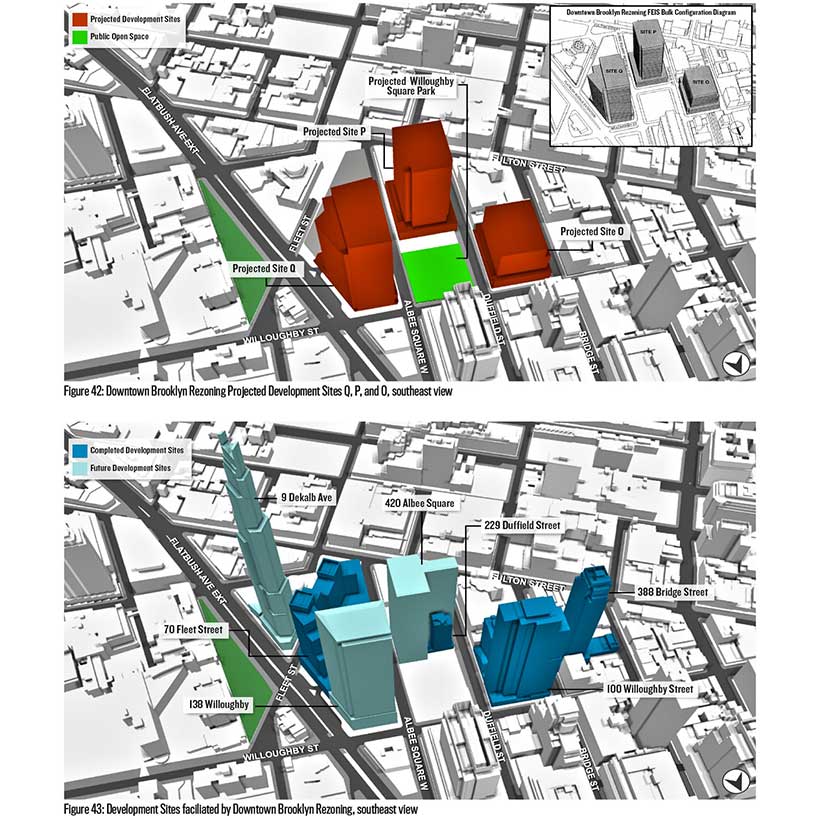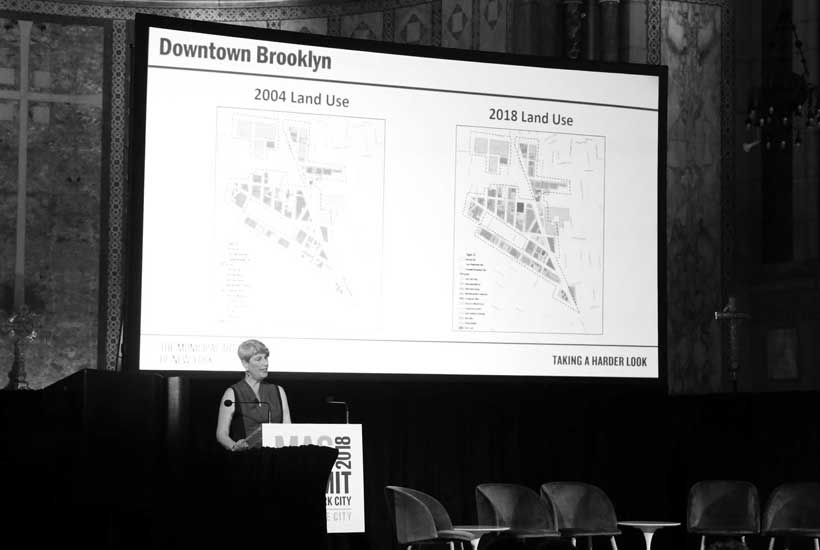Is CEQR Working? Emphatically, No.
Testimony to the New York City Council
The Municipal Art Society of New York (MAS) has long been one of the city’s strongest advocates for City Environmental Quality Review (CEQR) reform. In recent years, we have published two comprehensive reports that highlight ways to strengthen the CEQR process. SEQRA and Climate Change, released in 2009, raised the importance of measuring greenhouse gas emissions for projects subject to CEQR. Last fall, MAS released A Tale of Two Rezonings: Taking a Harder Look at CEQR, an in-depth comparative analysis of projected and actual development fostered by the rezonings of Long Island City (2001) and Downtown Brooklyn (2004). The report also examined the environmental consequences that resulted from the gross miscalculations of development that happened under each plan.
To answer the question posed on today’s agenda: “Are CEQR procedures useful for accurately predicting and mitigating impacts of City Planning Commission (CPC) decisions?” We respond with an emphatic no. Although the Downtown Brooklyn and Long Island City rezonings happened over 15 years ago, the same deficiencies and flaws remain today.
Download Testimony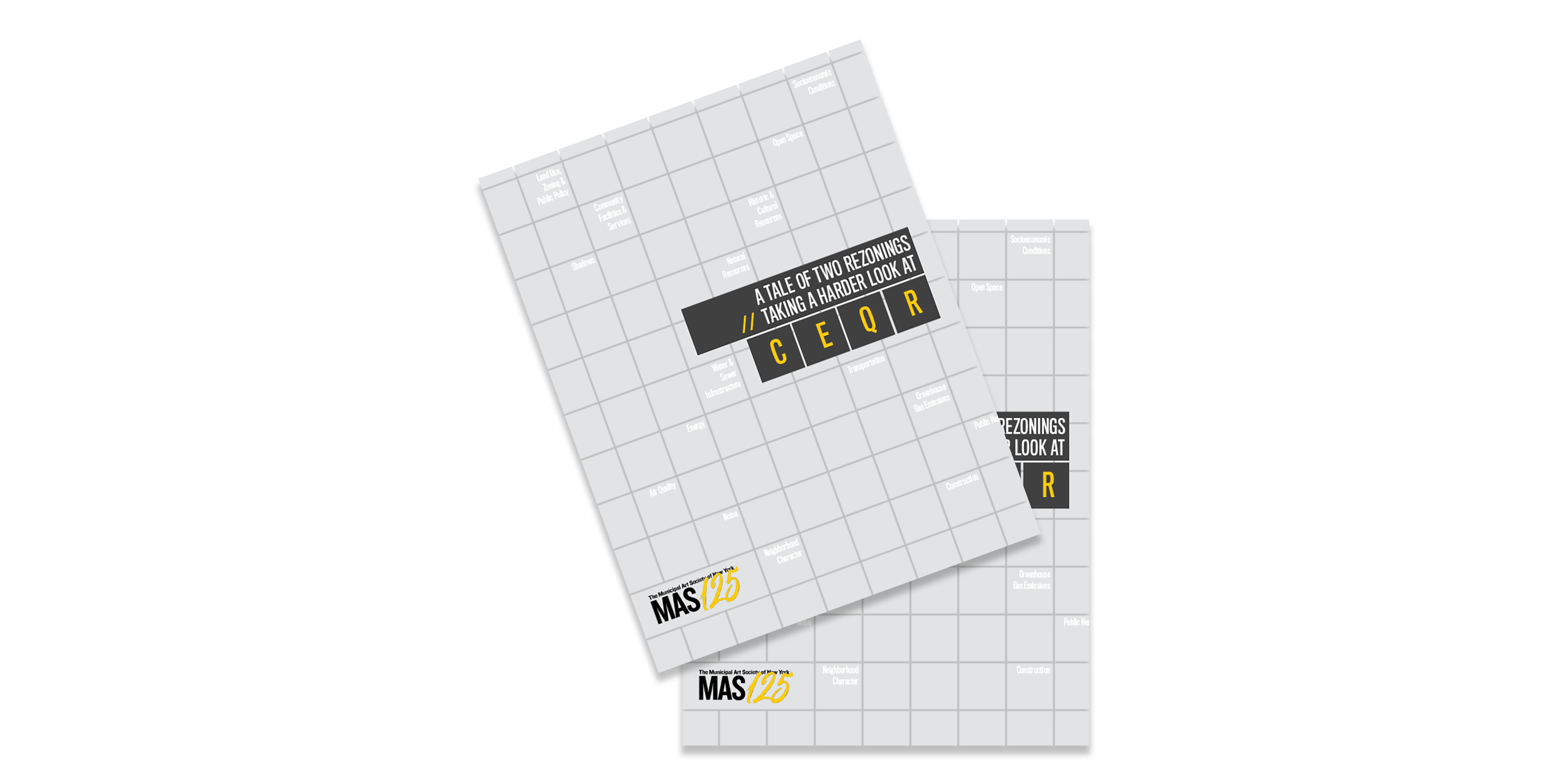
We are pleased that CEQR reform has advanced with the legislative measures introduced today. While these proposals are commendable, we believe that more robust, wholescale changes are necessary for CEQR to be truly transparent, dependable, and effective. To achieve this goal, we pose several recommendations to reinforce the bills introduced today and strengthen the inherent flaws in the CEQR process.
Strengthening Mitigation Measures and Procedures
Strengthening mitigation procedures is vitally important to CEQR reform. Although Intro 0252-2018 seeks to improve the tracking of mitigation measures identified in environmental review documents, the bill needs to go further. In A Tale of Two Rezonings, MAS recommended that Draft Environmental Impact Statements (DEISs) must include specific details of approved mitigation measures that address significant adverse impacts and identify the agency responsible for implementing them. Typically, DEISs provide very few details about mitigation other than to state that measures have not been approved. When details of proposed mitigation are finally made available in the Final EIS (FEIS), it is too late for the public to review and comment.
Applicants and the City must be held accountable for adverse impacts of development permitted under large-scale rezonings. One way to accomplish this is to require the fulfillment of mitigation commitments as a condition for granting certificates of occupancy. Further, environmental review documents must take into consideration unmitigated and unfulfilled mitigation measures from previous rezonings within a project’s quarter-mile study area to effectively address cumulative environmental impacts of a rezoning. And finally, CEQR lead agencies should provide follow-up technical memoranda at designated times during project construction and operation to evaluate the efficacy of identified mitigation measures. This information would provide an inventory of successful mitigation measures that could be applied to other large-scale rezonings.
In terms of improving the tracking of mitigation measures, Local Law 175 should be strengthened to include written commitments for mitigation measures identified in EISs, including the type, location, and schedule of the specific measures (e.g., traffic signal changes at specific intersections) that would be implemented, monitored, and if applicable, tested for effectiveness.
Strengthen CEQR Evaluation Methodology
Intros 1487-2019, 1523-2019, and 1521-2019 seek to improve CEQR evaluation methodology and increase transparency in areas of indirect residential displacement, traffic, and school capacity, respectively. Resolution 0009-2018 calls for improved coordination with involved City agencies in re-examining CEQR evaluation and mitigation criteria for impacts on neighborhood character and socioeconomic conditions. While these measures are a step in the right direction, we feel no effective change in the CEQR process can happen without strengthening the criteria and methodology in the CEQR Technical Manual for establishing the Reasonable Worst Case Development Scenario (RWCDS), the analytic framework of CEQR evaluations.
To accomplish this, MAS recommends using an expanded build year that includes all development sites under a rezoning. Furthermore, under large-scale rezonings, a significant amount of development occurs on soft sites that are not identified or evaluated in EISs. To strengthen soft site analysis criteria, we recommend that lots smaller than 5,000 square feet should be considered, based on the potential for lot mergers.
Increase Range and Scope of Alternatives Evaluated Under CEQR
Another fundamental improvement needed in the CEQR process is the evaluation of wider range and scope of alternatives. Typically, CEQR documents are limited to the evaluation of a No-Action and With-Action development scenario. MAS has several recommendations for strengthening alternatives analyses and disclosing the full development potential of a large-scale rezoning.
The first recommendation is an alternative that would evaluate development that could reasonably be expected to occur through zoning lot mergers and the transfer of development rights. This alternative could also bolster soft-site analyses and the formation of the No-Build development scenario by examining the potential development of smaller sites where development rights could be assembled through lot mergers.
The second recommendation is the evaluation of a reverse land use alternative, in which different primary land uses permitted under the new zoning are considered. The evaluation of this alternative would be helpful in the event that market or economic conditions change and the development that was anticipated under a rezoning changes course.
For the third alternative, we recommend an Optimal Sustainable Development Scenario alternative, which would assess the sustainability of a project, from construction through operation. This alternative would evaluate measures to reduce water and energy use, greenhouse gas emissions, urban heat island effect, shadows, and other sustainability metrics.
Finally, CEQR needs to be strengthened to better gauge community input in the planning process. To accomplish this, we recommend the evaluation of a Community-Based Plan alternative that is consistent with the goals of an existing community-based plan, 197a or otherwise.
Transparency and Accountability
We believe CEQR lead agencies should provide a clear and accurate explanation in the Purpose and Need section of EISs as to how a particular project would balance its goals with environmental concerns. For City-sponsored projects, stated objectives in CEQR documents must correspond with how the project would meet public needs and respond to applicable policies. For example, if a project proposes to provide affordable housing or result in sustainable benefits, the EIS must evaluate the impacts of various income levels under the City’s Mandatory Inclusionary Housing program or quantitatively disclose and assess the particular sustainable measures being proposed.
To improve accountability, we recommend requiring post-implementation review as part of the City’s contract with an EIS preparer. Furthermore, applicants should be required to commit to performing post-implementation review as a condition of EIS approval when an EIS is prepared by consulting retained by a private applicant.
The CEQR Access portal on the Mayor’s Office of Environmental Coordination website should include all EISs and Environmental Assessment Statements in the search function. The database should be integrated with the New York State Department of Environmental Conservation and include all applicable SEQRA documents linked to a GIS mapping feature that shows the locations of all environmental review projects in the city. CEQR Access should also include all CEQR findings statements and mitigation commitments integrated into GIS. This will make it much easier to track mitigation.
Finally, EIS quality must be improved. In general, EISs are cumbersome, unwieldy documents that are difficult for most people to read, let alone understand. We recommend improving standards for form, content, and consistency to make EISs more clear. We also suggest a short version highlighting the primary findings and conclusions in plain language.
Conclusion
The time is ripe for an overhaul of the CEQR process. As we stated in A Tale of Two Rezonings, we recognize that no City official or planning practitioner has a crystal ball with which to forecast future development. However, when the City initiates a large-scale neighborhood rezoning, even one with laudable goal, New Yorkers deserve a reliable representation of expected development and realistic evaluation of its impacts. Too often, they receive neither.
Thank you for the opportunity to provide comments on these important bills.
